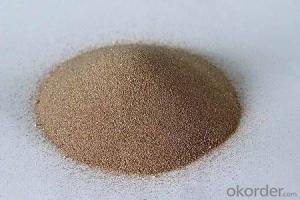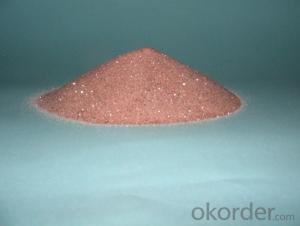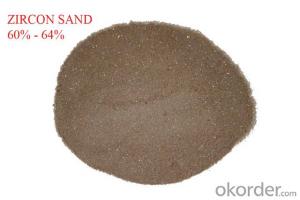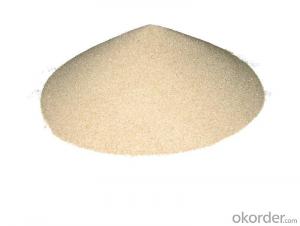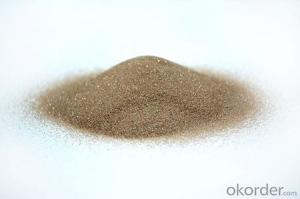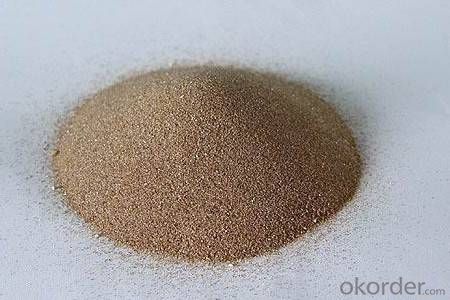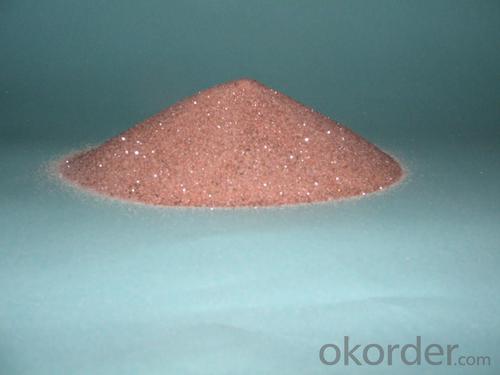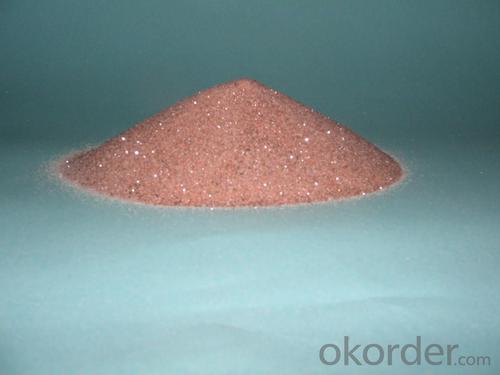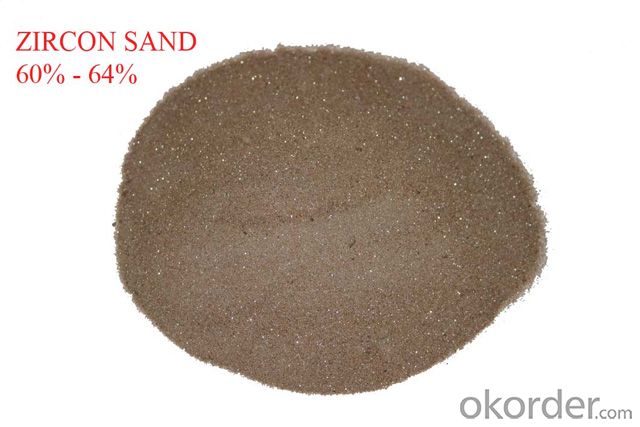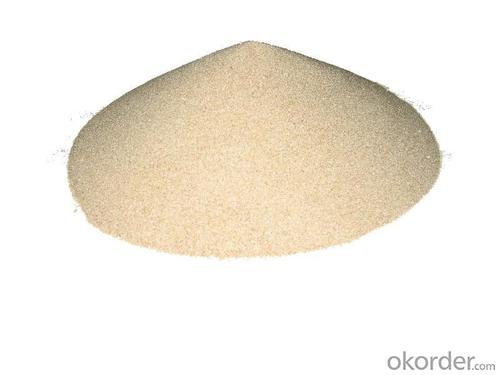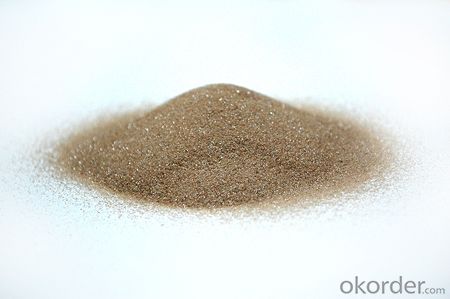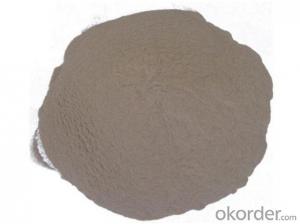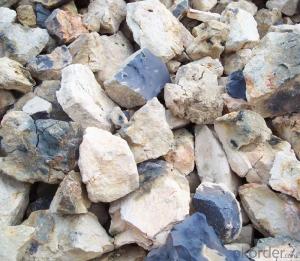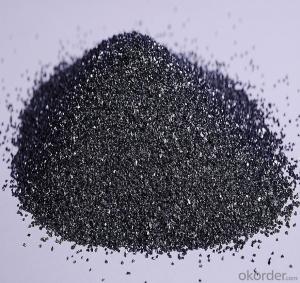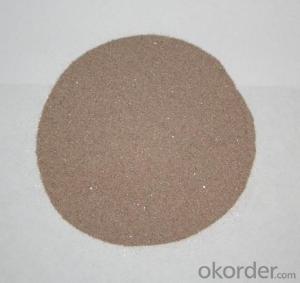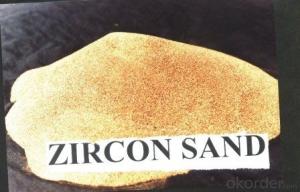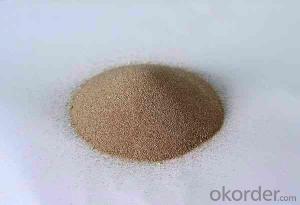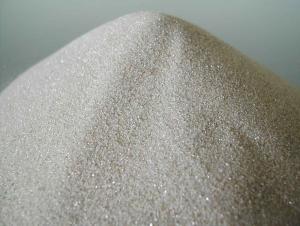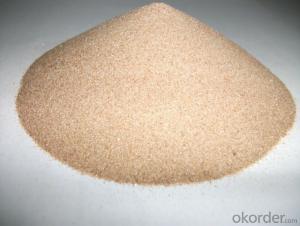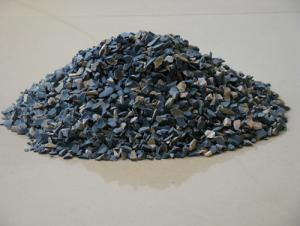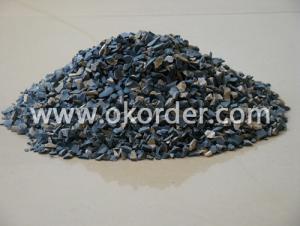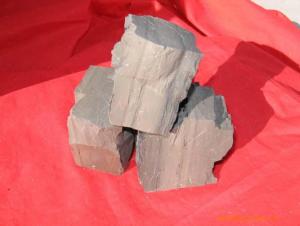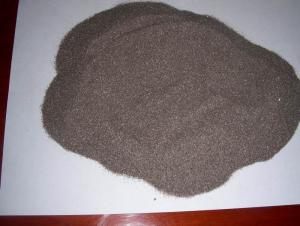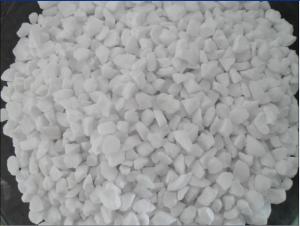Raw Materials for Refractory:Zircon Sand and Zircon Powder High Performance for Refractory Use 66-67%
- Loading Port:
- Tianjin
- Payment Terms:
- TT OR LC
- Min Order Qty:
- 25 m.t.
- Supply Capability:
- 3000 m.t./month
OKorder Service Pledge
OKorder Financial Service
You Might Also Like
Zircon Sand and Zircon Powder High Performafce for Refractory Use
1.Structure of Zircon Sand and Zircon Powder
This product is produced with the advantage of good high temperature stability of zircon sand.It has the characteristics of high strength ,high density and high refractoriness under load .So,this product has good performance of spalling resistance,abrasion resistance, liquid glass erosion resistance and other industrial slag erosion resistance.
2.Main Features of Zircon Sand and Zircon Powder
1 Tiny, round, solid ball shape provides greater surface area for improved performance and dispersion in its application
2 High refractory rating, lower specific gravity rating, and higher service temperature produces greater yield
3 With lower bulk density, it offers better air permeability for better performance as a result of its overall physical characteristics
3.Main usage of Zircon Sand and Zircon Powder
1. The 80-120M zircon sand is used in investment casting, the processing is called dipping.
2. It can enhance the shell`s thickness.
3. It is specialize used in inner layer being mixed with silica sol.
4. Zircon Sand and Zircon Powder Images
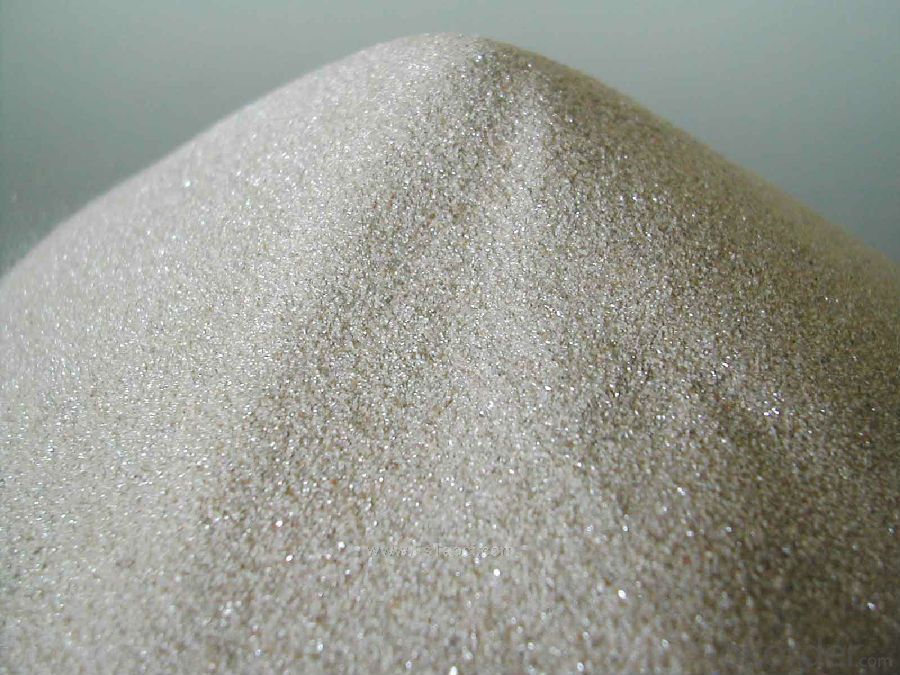
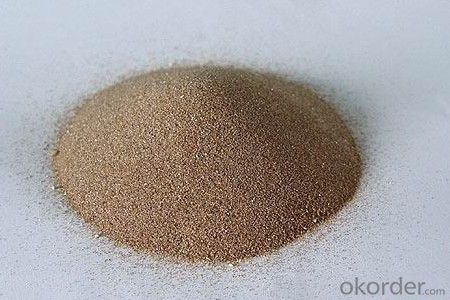
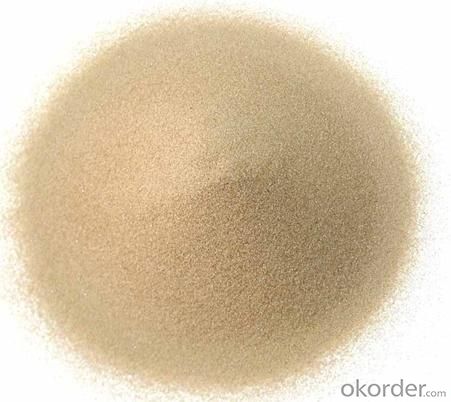
5. Zircon Sand and Zircon Powder Specification
Item | SY8 | SY6 |
Zr Content (ZrO2) | ≥66% | ≥65.5% |
Fe Content (Fe2O3) | ≤0.08% | ≤0.12% |
Ti Content (TiO2) | ≤0.10% | ≤0.10% |
6.FAQ of Zircon Sand and Zircon Powder
1). Q: Are you a factory or trading company?
A: We are a factory.
2). Q: Where is your factory located? How can I visit there?
A: Our factory is located in China. You are warmly welcomed to visit us!
3). Q: How can I get some samples?
A: Please contact me for samples
- Q: How to use fire-resistant soil?
- Clay refractory soil 1, characteristics and uses: Clay refractory brick is a weak acid refractory material, its thermal stability is good, suitable for hot air furnace, all kinds of boiler lining, and flue, smoke room, etc.. 2, product specifications form: standard shape, general, special-shaped and special-shaped brick. Physical and chemical properties of fireclay bricks.
- Q: How many kinds of A-level fireproof and thermal insulation materials are there?
- Inorganic insulation materials basically can achieve the goal, such as glass wool, rock wool, and foam glass. The phenolic foam in the organic foam material is special. Phenolic foam is not only good at insulation, but also good at compounding with steel and other materials to achieve A-level performance, and the A-level insulation materials are: Rock(ore) wool, foam glass and inorganic thermal insulation mortar.
- Q: How long does it take for refractory cement to solidify?
- 1. First you should be aware of the concepts of condensation and condesation time. Refractory cement belongs unshaped refractories, which when added water or liquid binding agent to mix, the agitation material will gradually lose thixotropy or plasticity and become in a state of solidification, thus is solidified. The time needed to finish the process is called solidification time. The whole process is divided into initial and final set. When beginning to lose plasticity called the initial setting, when called plasticity completely lost the final setting. 2. For refractory cement, the solidification time depends on the matching of the material and the parts and using methods. Under normal circumstances, in order to meet the requirements of time of construction, the initial set time should be no shorter than 40min, and the final set time should be no longer than 8H 3. There are also some exceptions. When refractory cement is used for spraying and injection operation together with other refractory castable, the set time is required as short as possible, sometimes flash set is required to prevent the occurrence of peeling or collapse of the spraying layer.
- Q: Who knows the classifications of magnesia refractory?
- Magnesia chrome series products: The main ingredients of magnesium chromium series are MgO and Cr2O3. Periclase is the first phase and magnesia-chrome spinel is the second phase. Products belonging to this series are magnesium chrome brick and chrome magnesia brick. The main ingredients of magnesium aluminum series are MgO and Al203. As they generate MgO and Al203, all magnesium chromium series products contain magnesia material. magnesium calcium series products The main components are MgO and CaO. They have high melting points, which are important magnesia materials. 5, magnesium silicon series products: The main component of magnesite series is SiO2, when the C / S<5, SiO2 and MgO generate MgO.Al2O3 (forsterite). From the perspective of microscopic mineral, main products of pure aluminum series include magnesium aluminum brick, periclase spinel brick, corundum spinel brick and aluminum-spinel castable in unshaped materials. I hope this answer can help you.
- Q: What's the poured refractory material?
- According to its category, raw material of basic refractory: Mainly magnesite (magnesia), dolomite, lime, olivine, serpentine, high alumina material (sometimes neutral); main neutral raw material: chromite, graphite, silicon carbide (artificial).
- Q: The difference between refractory and thermal insulation material
- Refractory refers to inorganic non-metallic material, whose refractoriness is not less than 1,580℃, but refractory is not necessarily insulated material. Inorganic thermal insulated material also belongs to refractory as long as its refractoriness is higher than 1,580℃.
- Q: What's the refractory material in common use currently?
- (1) Alumina-silica refractory brick: Except the transition band, hot end and firing zone of the rotatory cement kiln, it can be applied to the whole burning system of the precalcining kiln, such as the fixed wall lining, wicket, cooling machine, tertiary air duct, burner, etc. It mainly includes alkali-resisting brick, high alumina (anti stripping) brick, silica-mullite brick, etc. (2) Basic refractory: For the upper transition band close to the part of burning zone and the burning zone, its inner lining can endure the highest flame temperature of 2000℃ and material temperature of 1350℃-1400℃, and it also has to withstand the permeation of sulfur and alkali compounds, permeation, thermal shock and oxidoreduction of hot-melt clinkers (liquid phase), mechanical stress of elliptic cylinder deformation, etc. Therefore, inner linings are the most demanding parts to withstand stress, and only basic refractory can meet with requirements under this working condition. (3) Fireclay insulating refractory: Its microstructure has notable characteristics of high porosity, large pore size and thermal insulation performance. For its low volume density and light weight, it is usually referred to as lightweight refractory. Fireclay insulating refractory product has great varieties, and it is usually classified and named according to its chemical and mineral compositions or production raw materials, and it is also classified according to its operating temperature and material form. Currently, the most used main thermal insulation material for the precalciner kiln system at home and abroad is calcium silicate board; besides, light weight castable and insulating fire brick are increasingly used year by year. Other thermal insulation materials are mainly ceramic fiber products.
- Q: What is the new fireproofing standard of external wall thermal insulation materials?
- 1, The height of fire barrier zone is not less than 300, and the thickness is same to the external insulation system; 2, the horizontal dividing joint should be set on the boundary between fire barrier zone and thermal insulation system; 3, Fire barrier zone is usually set in the horizontal direction, the fire barrier zone should be set above the door and window openings, the distance between the low edge of barrier zone and upward side of the hole should not exceed 500mm; 4, The construction of fire barrier zone insulating layer should carried on from bottom to top with EIFS insulating layer, which is not first leave the place in the EIFS insulating layer, and then paste fire barrier zone insulation board; 5, pasting the insulation board fire barrier zone insulation board and EIFS insulation board should be stitched closely, the width is more than 2mm gap application EIFS insulation materials or fire-retardant foam polyurethane padding;
- Q: Development trend of refractory industry
- In the central provinces in Henan, Shanxi, Liaoning China main manufacturer of refractory material, which is the main origin of three China bauxite, magnesite and other refractory materials; refractories industry by the end of May 2009 more than 3236 enterprises; industry revenue reached 67 billion 52 million 540 thousand yuan, Henan Province, Liaoning, Shandong, Jiangsu, Hebei and other regions, and refractories industry in the development of better leading enterprises, such as blue and white, accessible, prco etc. at present, its sales in the industry in the proportion is still small, the largest sales is also inadequate in refractory industry in 4%. An enterprise should play a leading role in leading enterprises in the industry, and its turnover in the industry should be more than 15%. Obviously, at present the refractory industry in the leading enterprises do not have, and the refractory industry concentration needs to be improved, and the existing resources in the refractory industry integration, is undoubtedly the way this process effective and efficient.
- Q: How many levels are there in the classification of PP fireproof materials?
- The level of fireproof materials: A-level: Non-combustible building materials have rare chance to burn. A1-level: Non-combustible materials, no open fire A2-level: Non-combustible materials, smoke should be tested and qualified. B1-level: Fire-retardant building materials: Fire-retardant materials are good at resisting flame. It is difficult for them to burst into fire when coming across open fire in the air or at high temperature. It will not quickly get wilder and when the fire source removes, it will be extinguished immediately. B2-level: Combustible building materials: Combustible building materials can play a certain role in preventing combustion. It will immediately burst into flames when coming across open fire or at high temperature, and will lead to fire spreading, such as wooden pillars, roof frames and beams as well as stairs. B3-level: Inflammable building materials are highly flammable with no flame retardant ability, fire risk is high.
Send your message to us
Raw Materials for Refractory:Zircon Sand and Zircon Powder High Performance for Refractory Use 66-67%
- Loading Port:
- Tianjin
- Payment Terms:
- TT OR LC
- Min Order Qty:
- 25 m.t.
- Supply Capability:
- 3000 m.t./month
OKorder Service Pledge
OKorder Financial Service
Similar products
Hot products
Hot Searches
Related keywords
